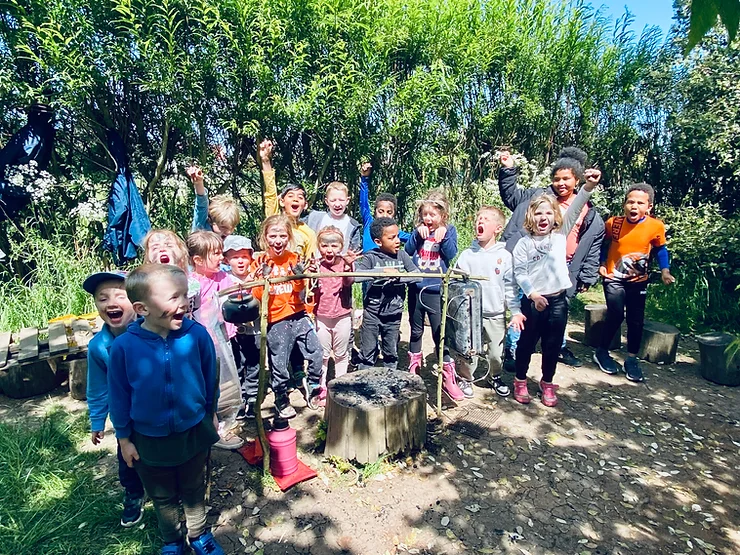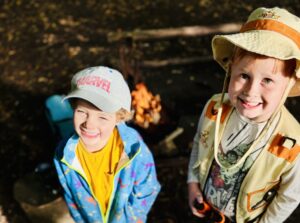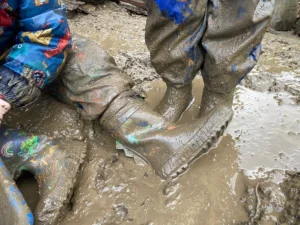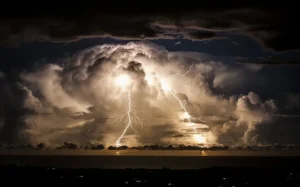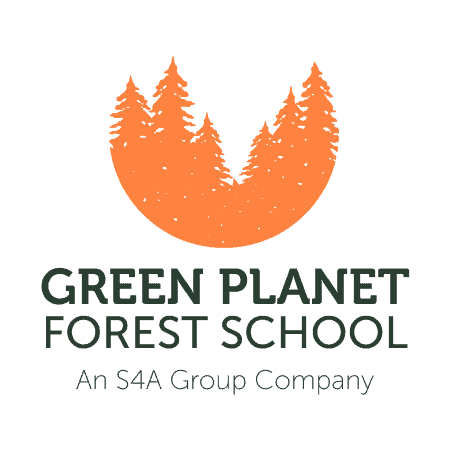Time outdoors is a key pillar in children and young people’s lives as they grow and develop and it plays an important role in their mental health and wellbeing. I’ve written a fair bit about how child development, and especially neuro-diverse child development can be accelerated by unstructured free play during time outdoors and specifically at Forest School sessions, but now it’s time to get to the really really fun stuff, what they actually get up to, the impact it has on their holistic development, and what they’ll remember most, about our Forest School sessions in school time, at after school clubs and at our holiday camps!
Basecamp
Since the dawn of time human tribes across the globe have had some form of communal area where they could come together to talk, share, eat, learn and bond. It forms the very core of our society and is an asset to any community. Our journeys always begin at basecamp, it’s where I bring the group to inspire their creative imaginations (and to coax out their feral side), and there is always a wobbly log for every bottom.
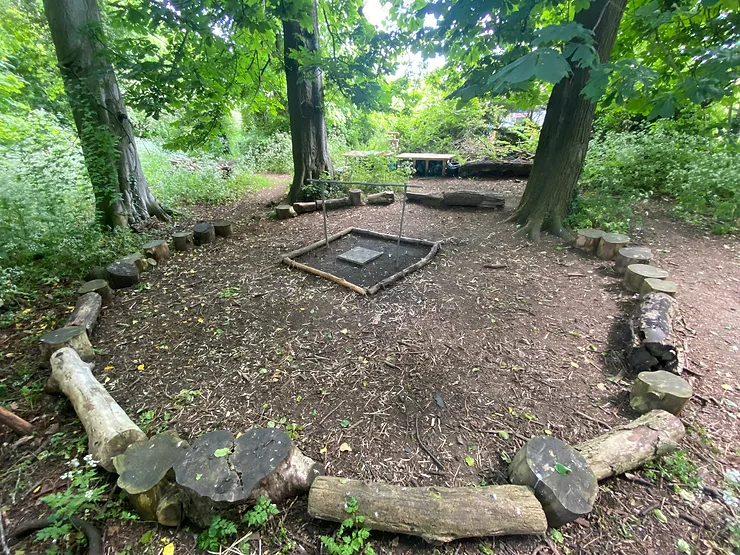
Resources
To aid the inspiration of creative imaginations, and to set an expectation where each and every child can lead their own adventure, their own way, I bring along a number of carefully selected resources which they are free to use as they see fit. Ropes, string, tarps, nets, magnifying glasses, binoculars, compasses, worm measures, mini-beast hunting sheets, maps, even the odd rubber snake! To benefit from free play which is truly child led, they need stuff, and preferably the type of stuff they wouldn’t normally get to play with.
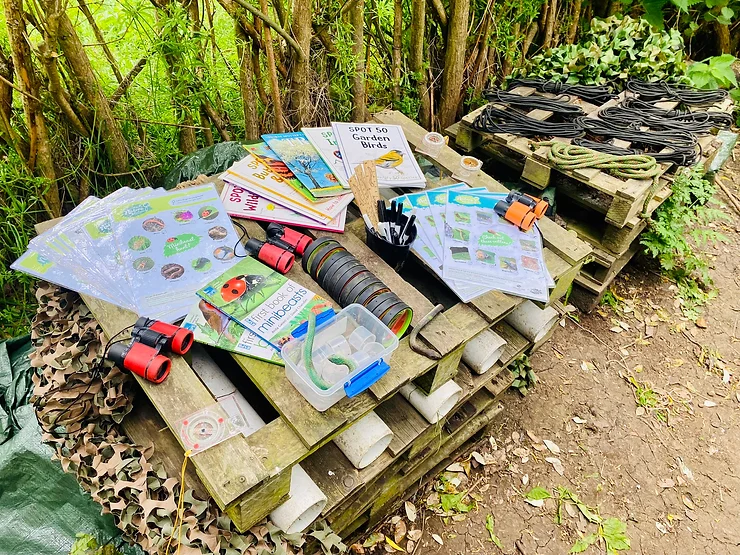
Shelter building
Never underestimate the power of suggestion. I might during the course of a session, suggest for example that it may well rain, and if it does, how exactly are we going to stay dry? That in itself is usually sufficient to have a group suddenly become designers, planners, builders and engineers in a heartbeat! For longer days which may involve snacks or lunches such as during our holiday camps, shelters can remain up the whole day and our guests can spend their breaks inside eating and drinking hot mud (chocolate). But even though in this neck of the woods (pun fully intended) we get between 120-145 days of rain a year, it doesn’t always. So how do we test their engineering skills against the forces of nature? Usually with buckets of water and masses of screams and giggles!
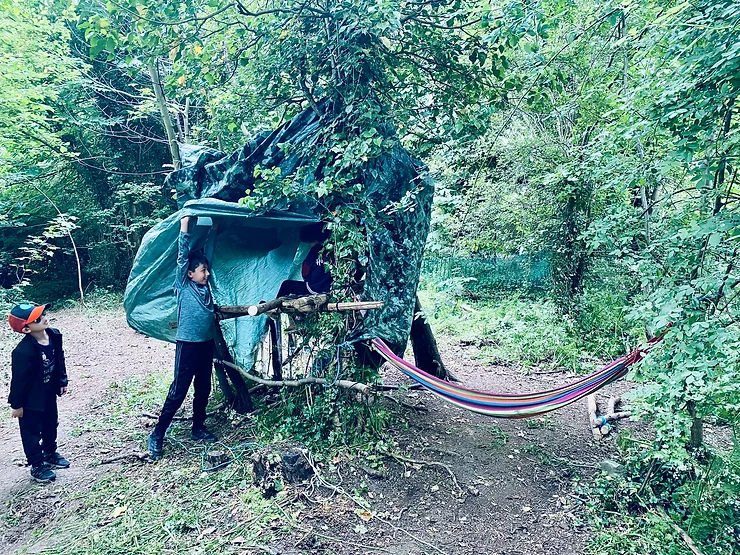
Construction
And the builds don’t stop at shelters. if we don’t have a resource that we need or want, we build it with our own fair hands, like this mud kitchen which was built by children aged from 4 and up!
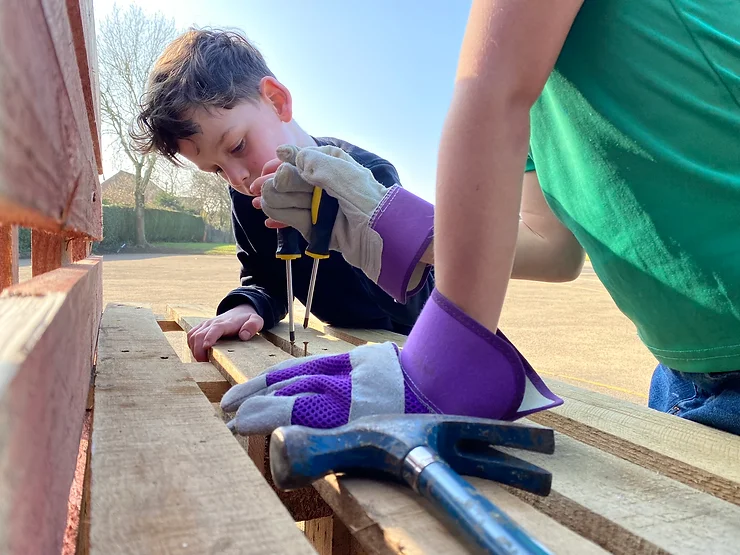
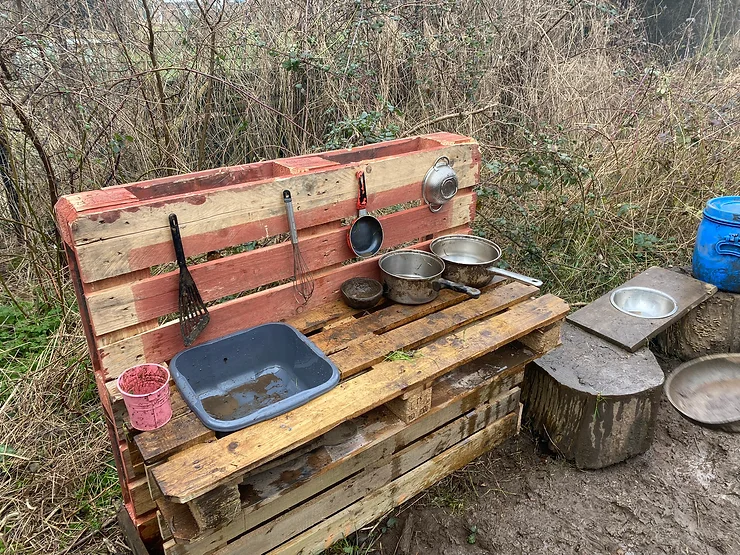
Tool use
Other resources, ones which we do oversee the use of, include wood saws, hammers and screw drivers, but also include an axe, a machete, bow saw, pruning saw, peelers and bushcraft knives for whittling, a hand drill and all sorts of bits and pieces like sand paper, sharpening stones and so on. Children get to use these under careful guidance by a qualified Forest School leader and of course with relevant safety equipment like gloves or goggles if necessary. But you would be surprised at just how safe even the youngest folks are when they need to be, children rarely get a chance to risk assess and risk manage because everything in their world is made so safe by well meaning grown ups. Here they learn skills, not just with tools, but skills to keep themselves and others safe, and they get the self-confidence boost which comes with learning that new skill. Win:Win!
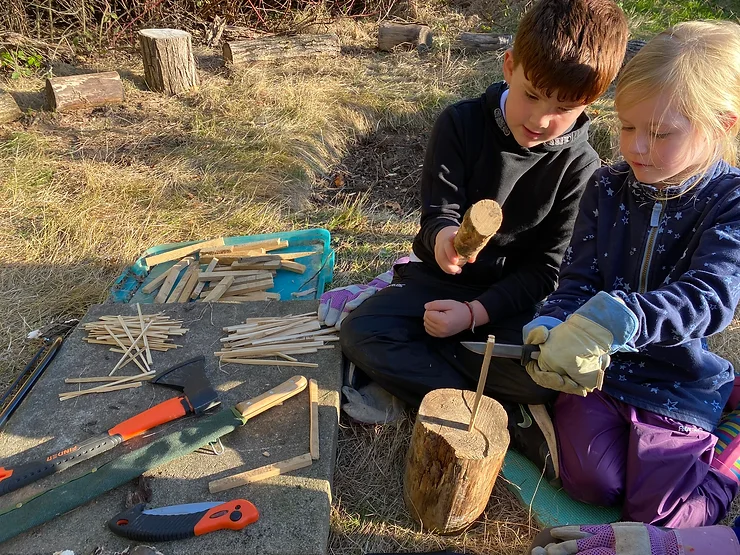
Crafts
For the creative minds there are always Forest School crafts on offer from whittling to weaving to wands and wizards. And all their creations can be taken home as a memento.
Tree Climbing
We do quite enjoy making use of our surroundings, and what better way than to climb up them! Tree climbing presents a variety of challenges, not just whether they can physically get up the tree but also mentally. Pushing our fears and testing ourselves is a great way to discover what we can do if we approach situations with a positive, can-do attitude. Here are a couple of my tree fans, the youngest aged 4 spent an entire half term trying to get up this big old oak, you should have heard the giggles when she finally made it!
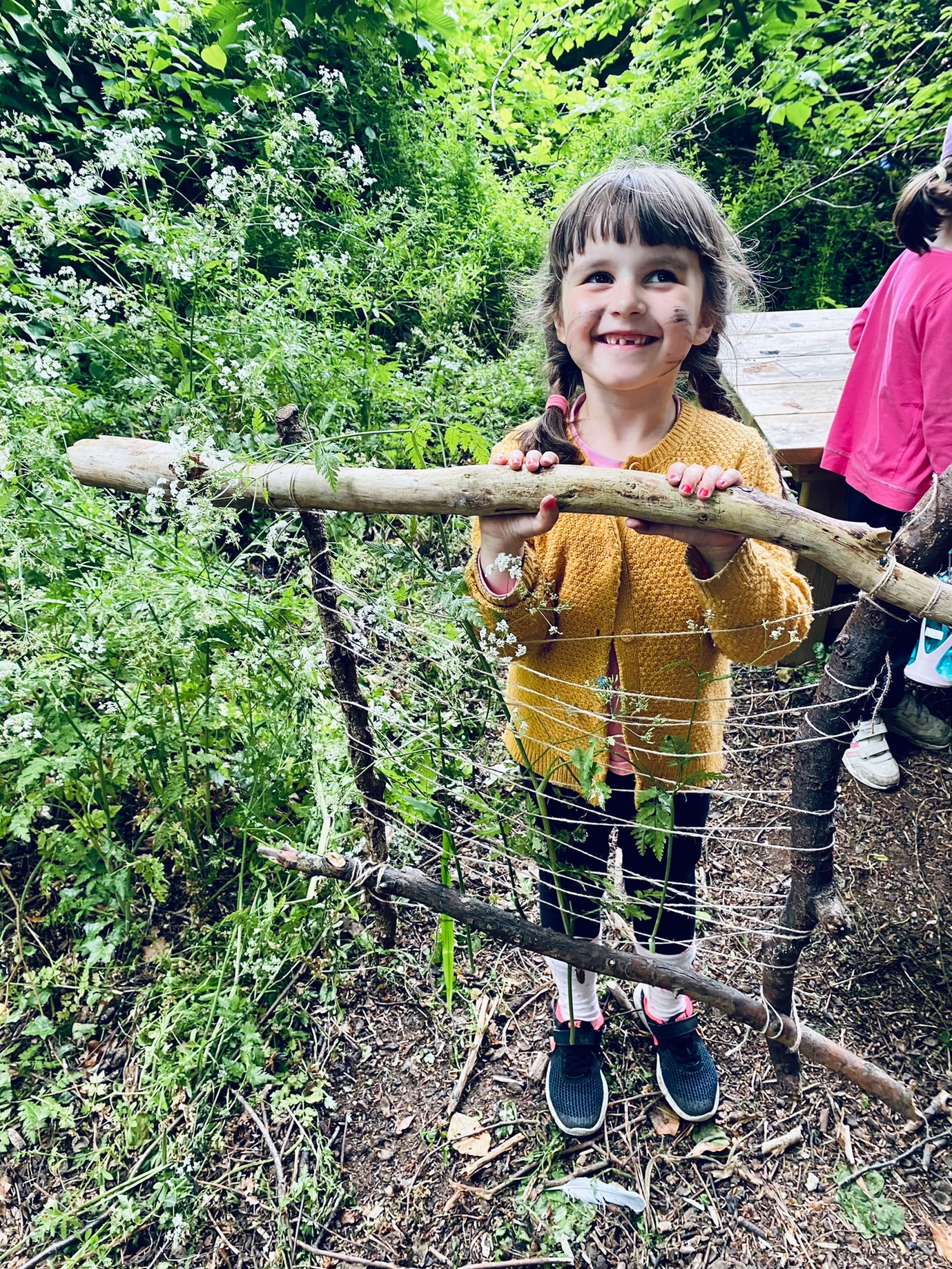
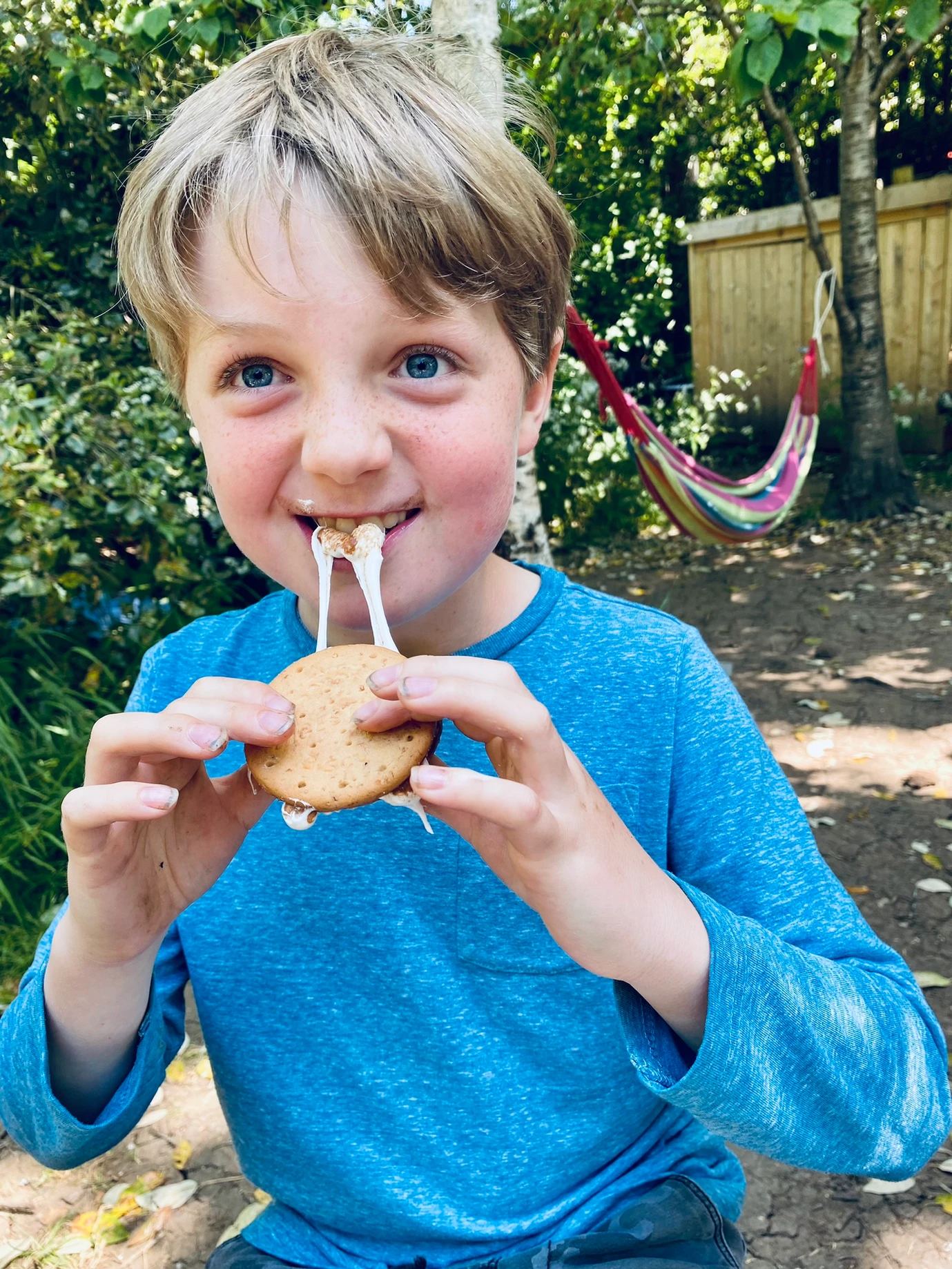
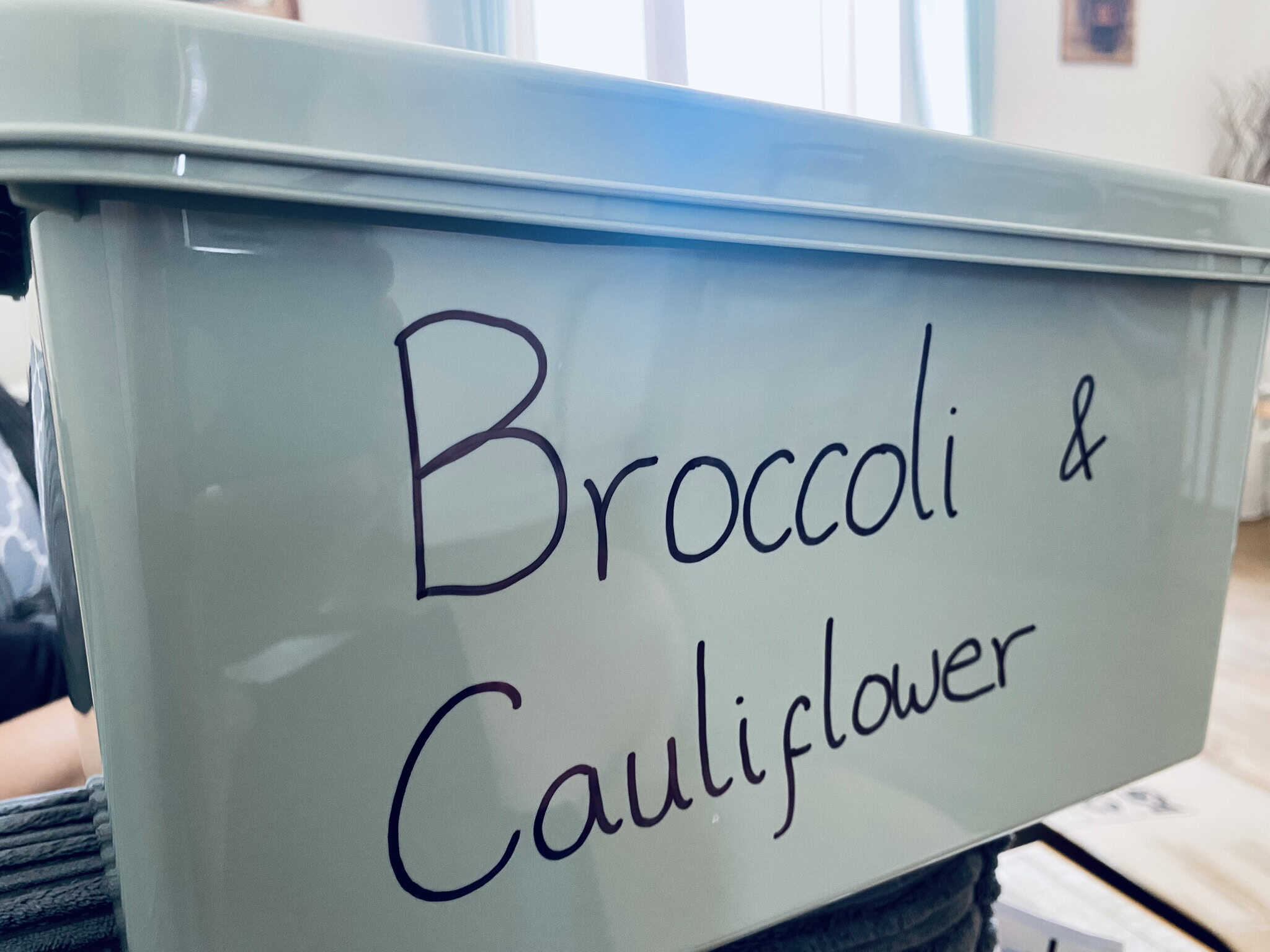
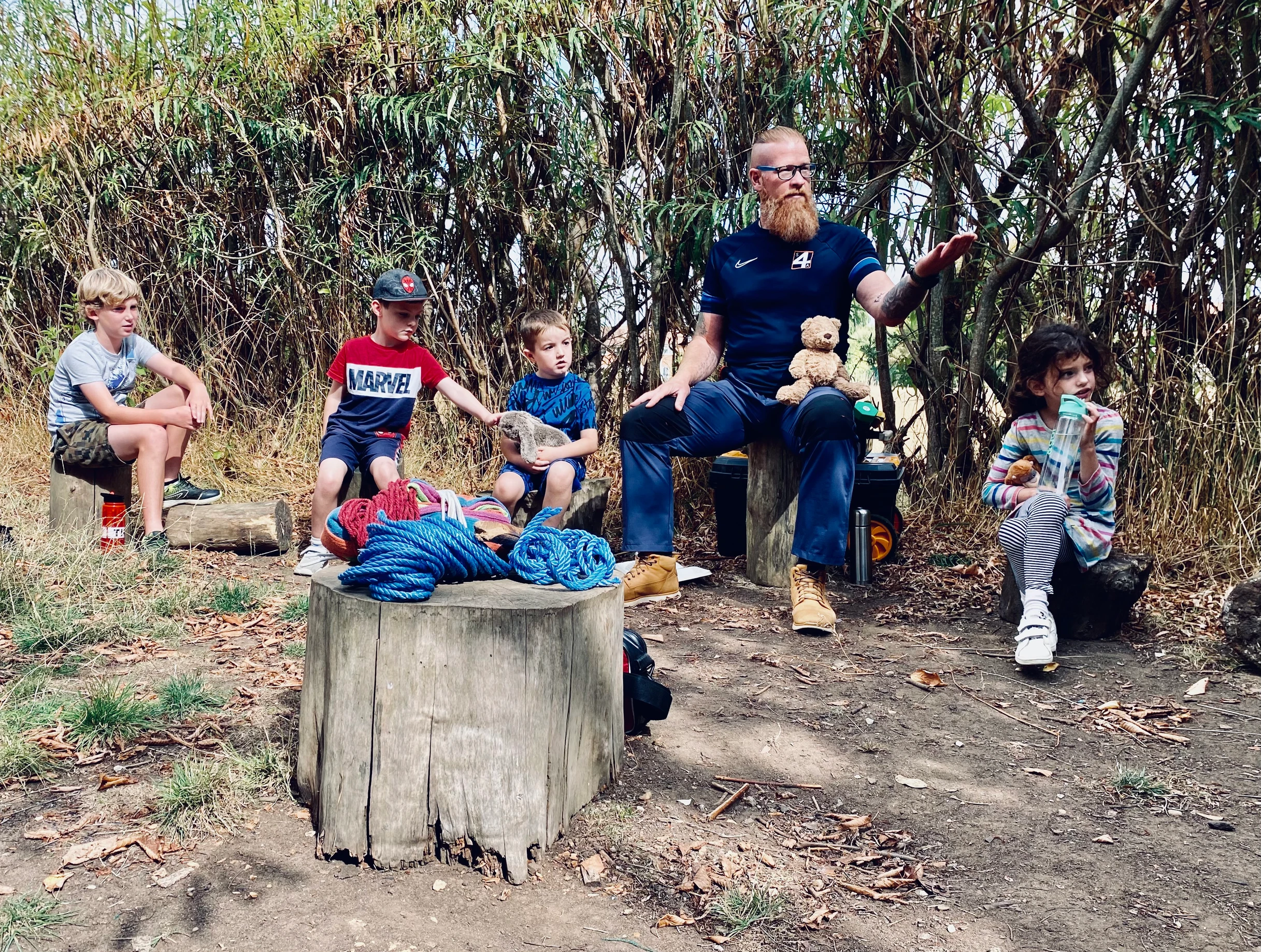
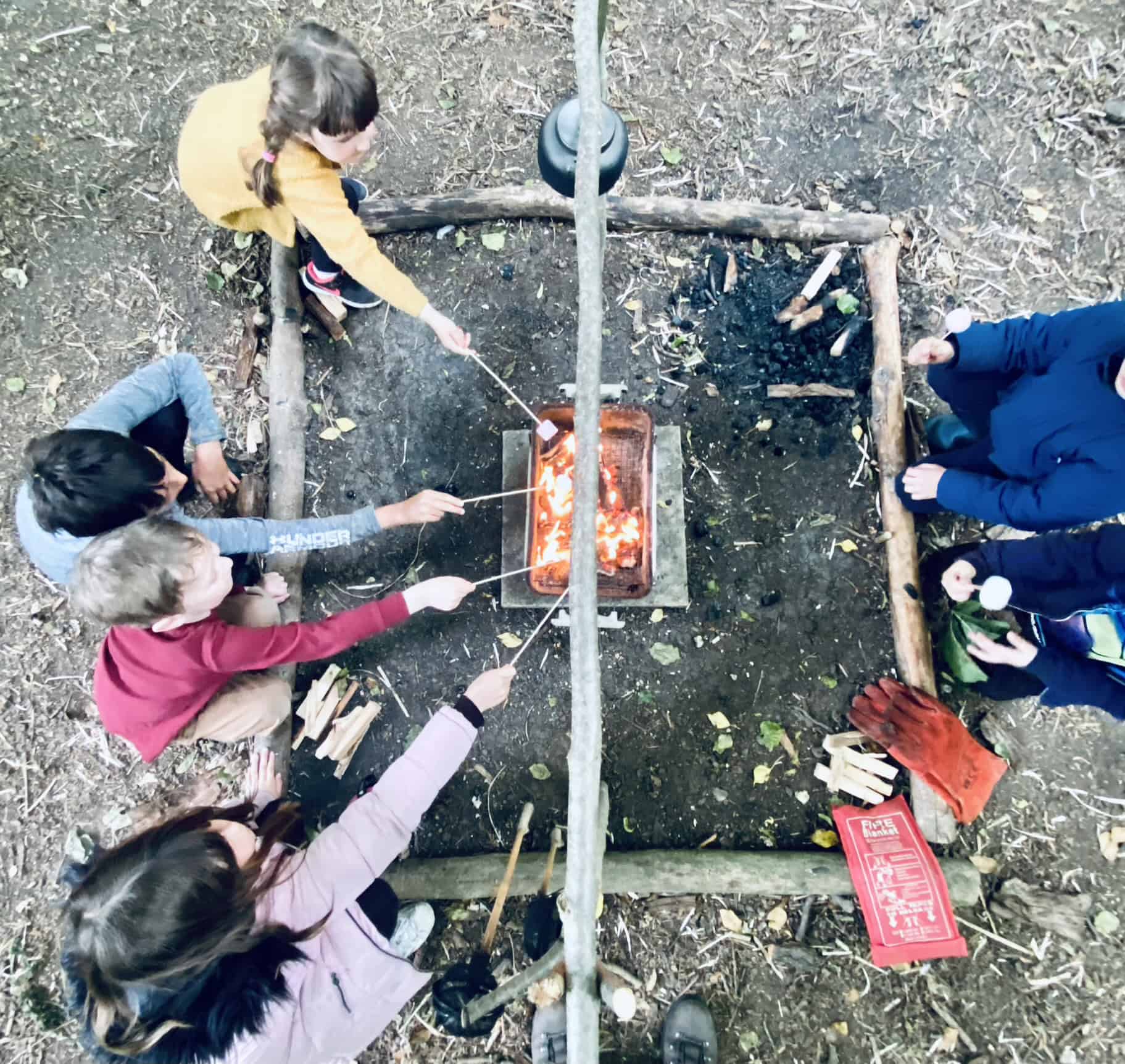
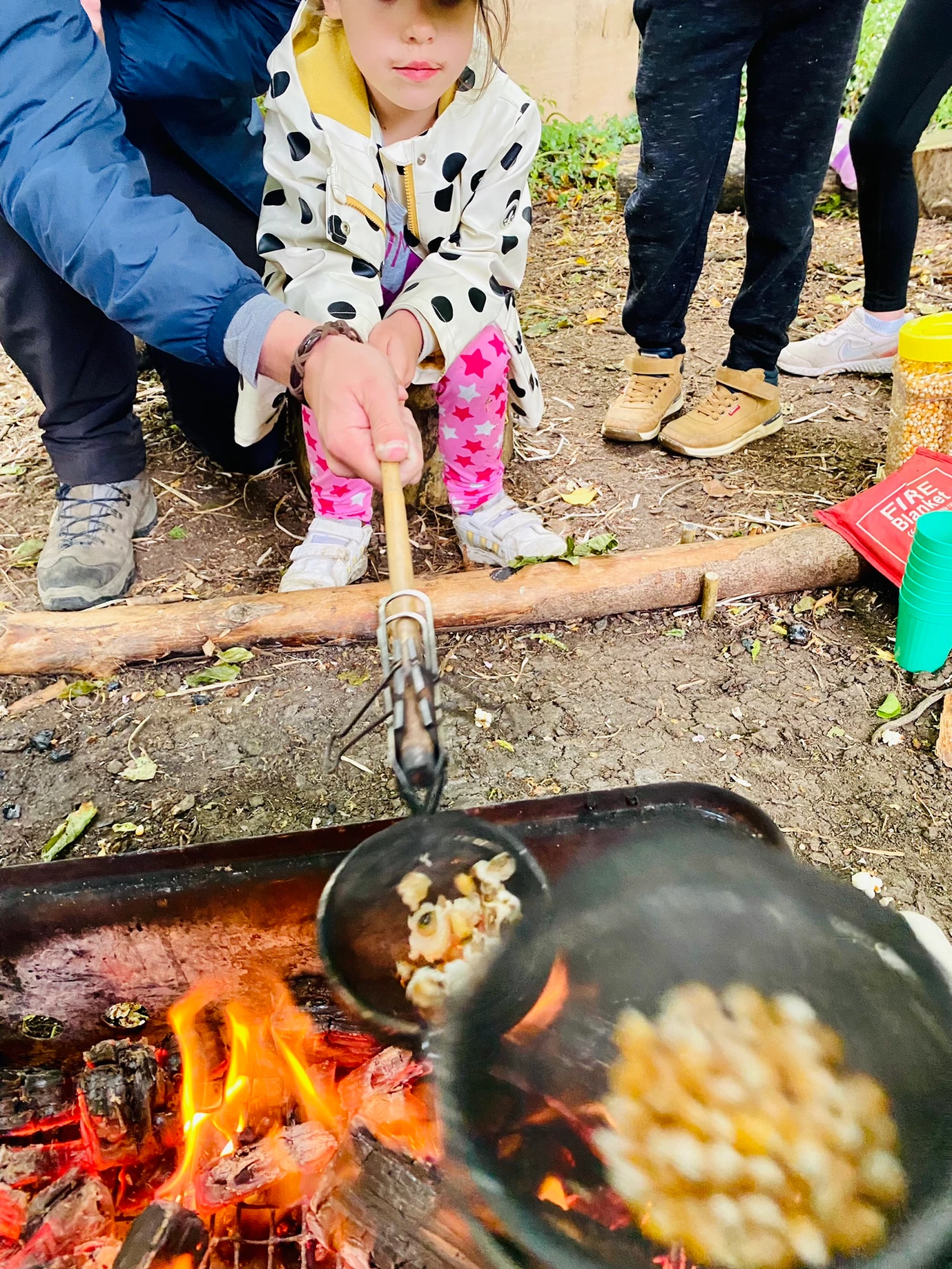
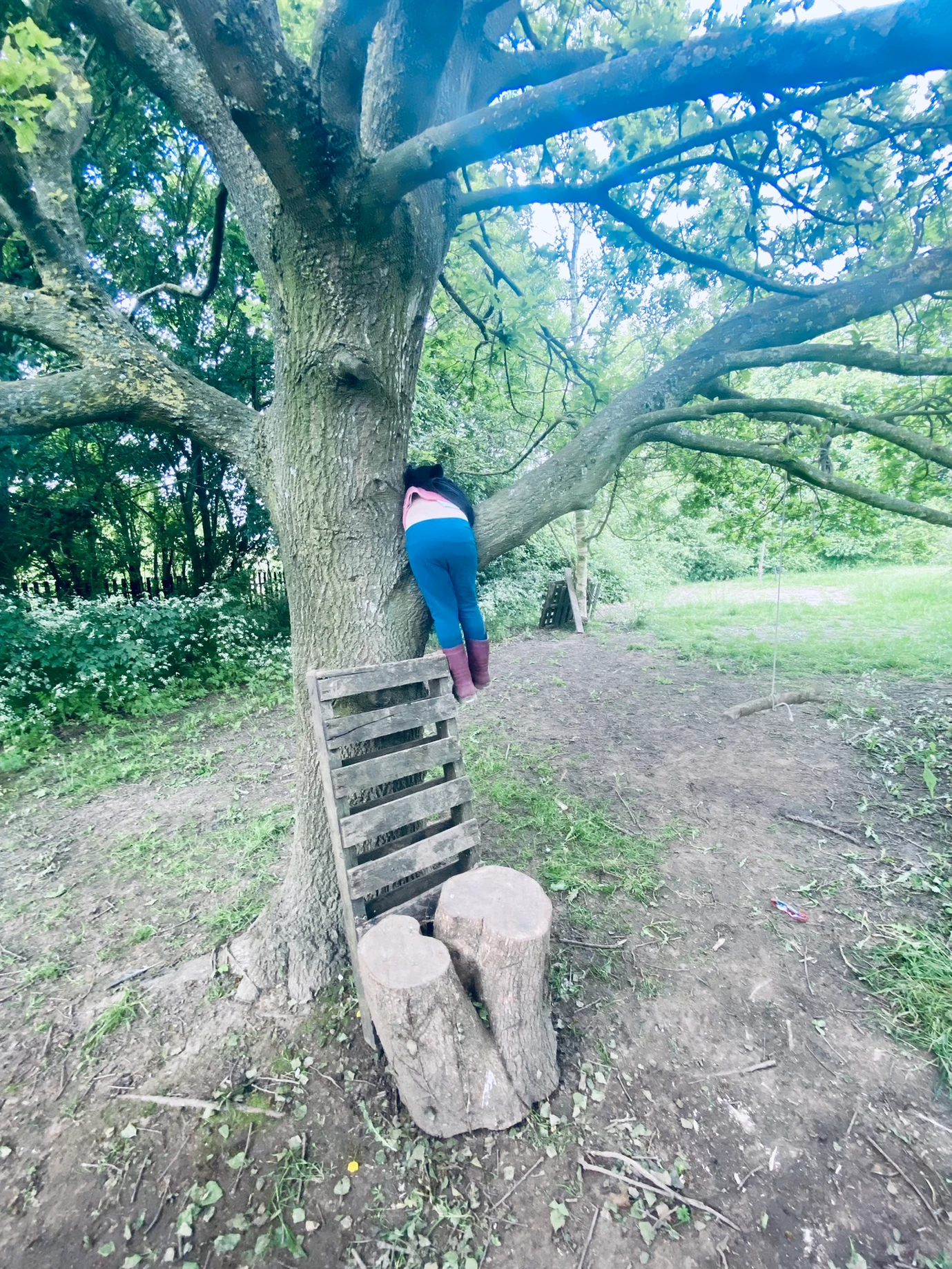
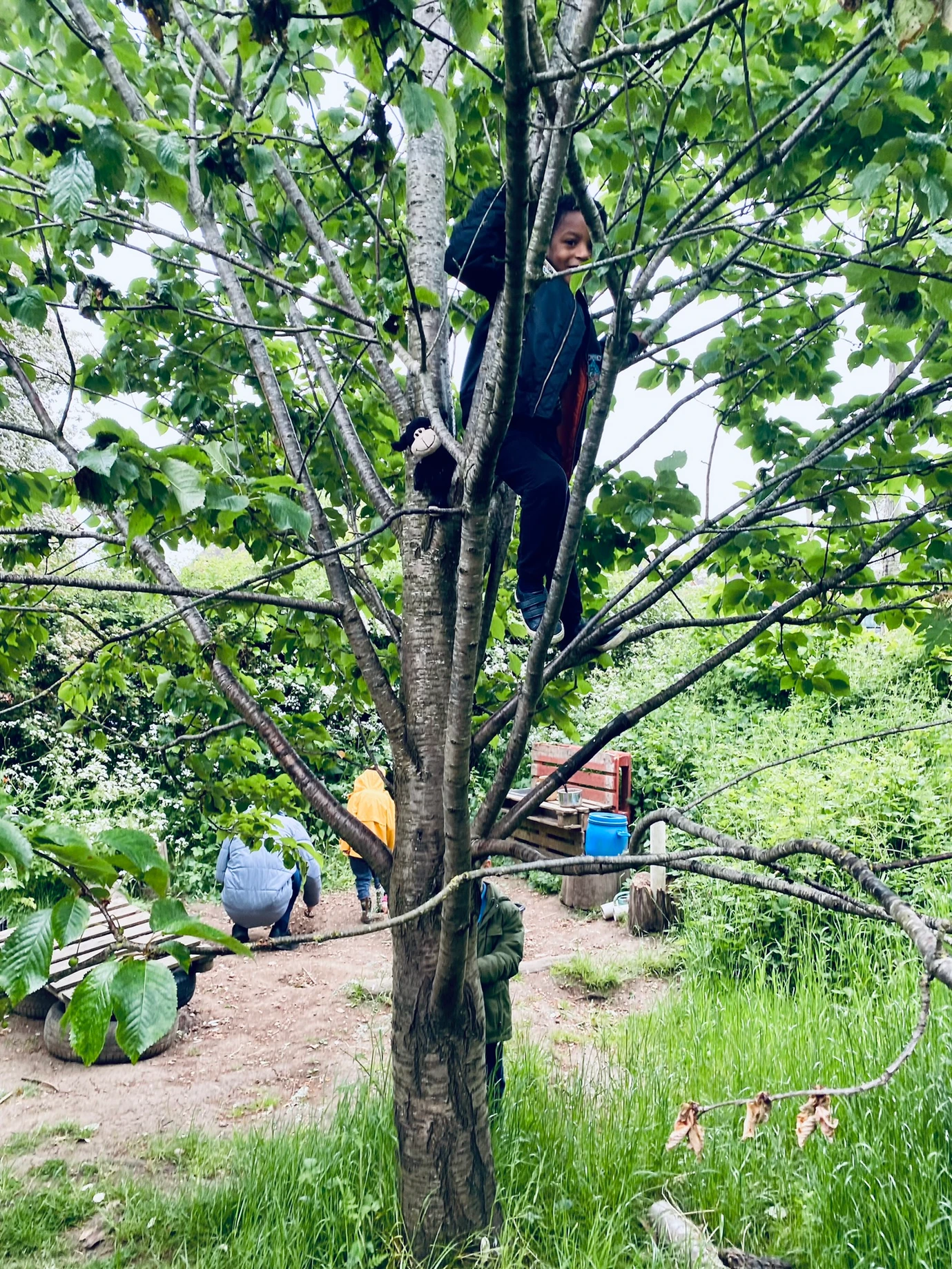
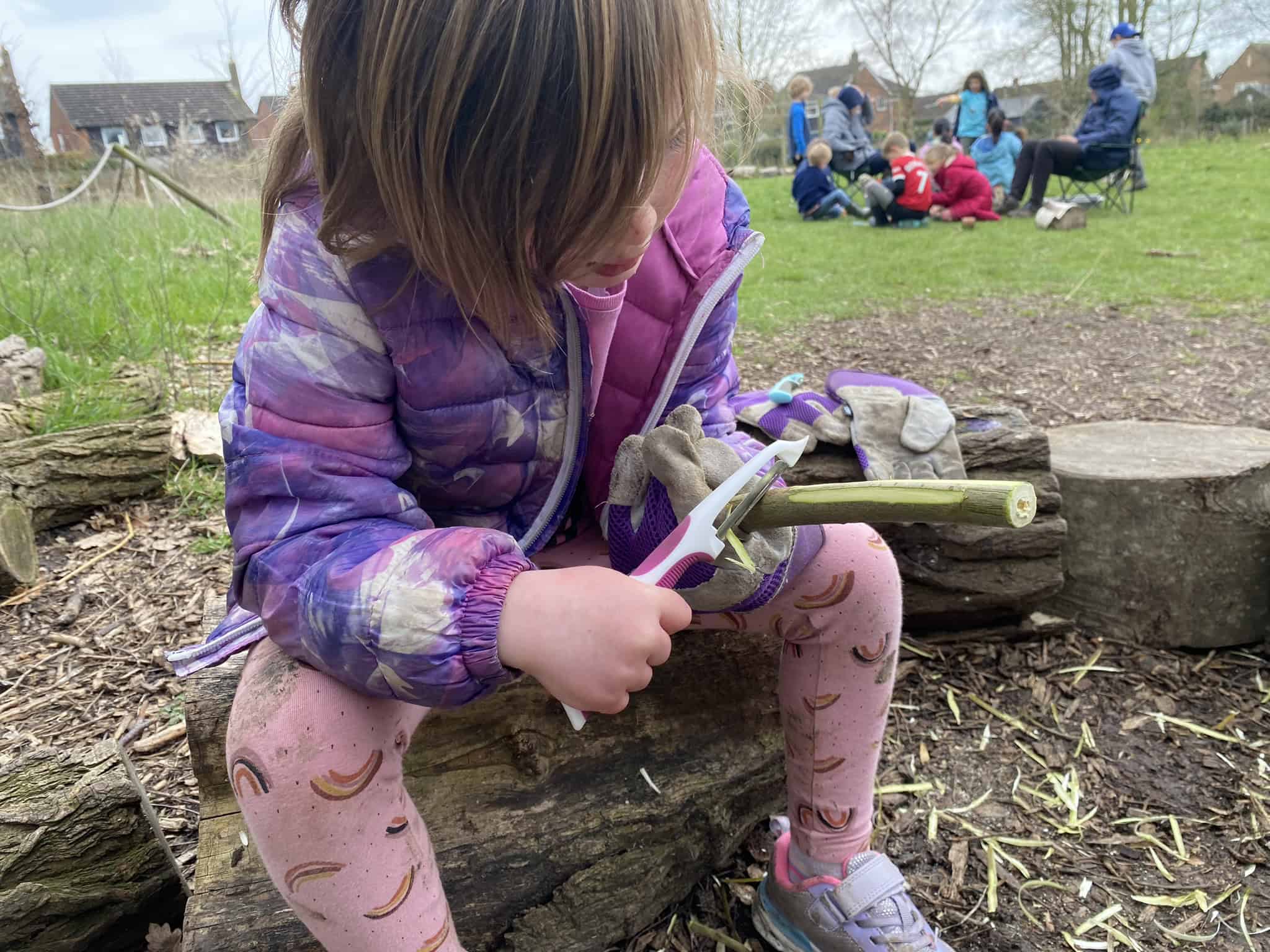
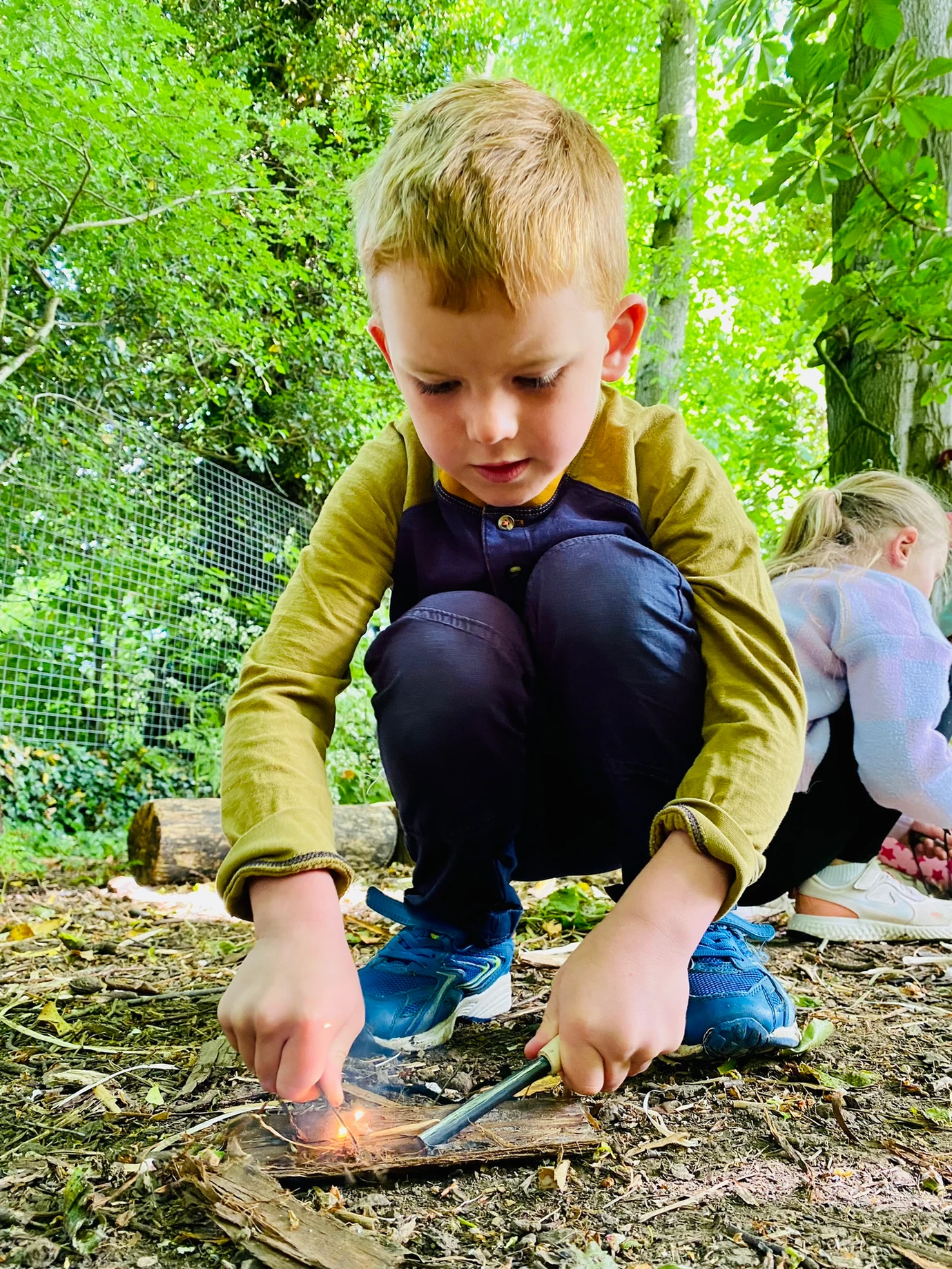
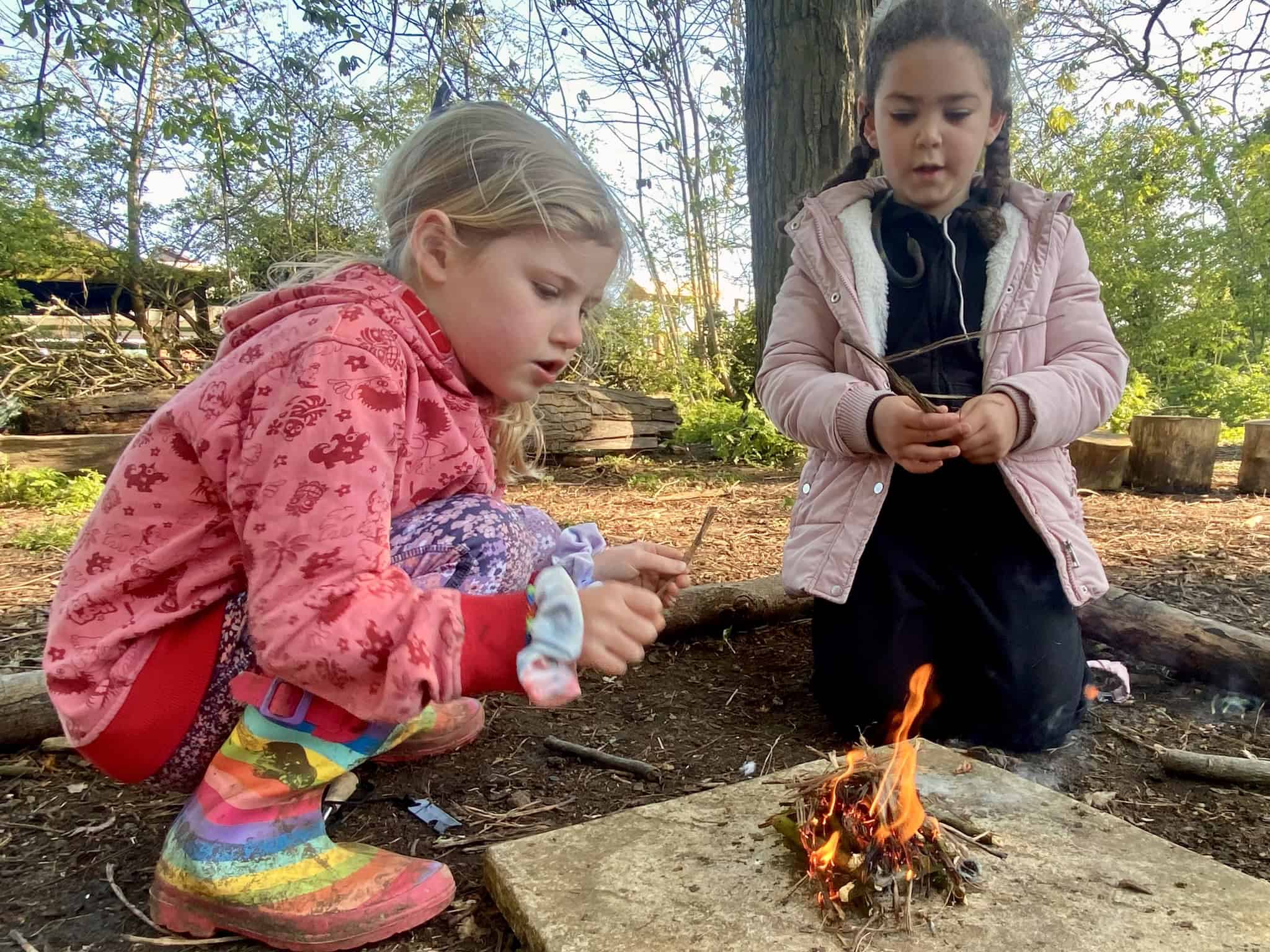

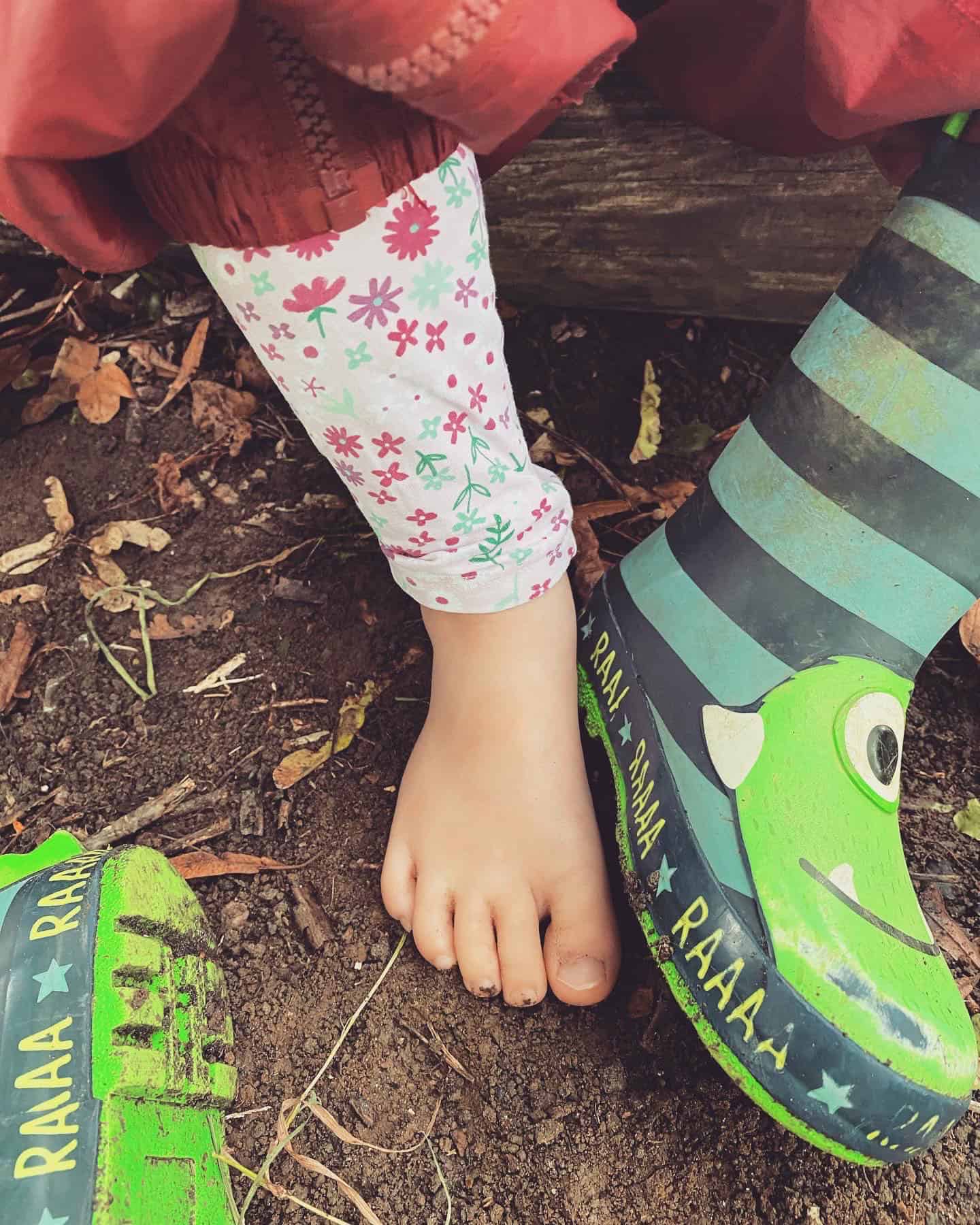
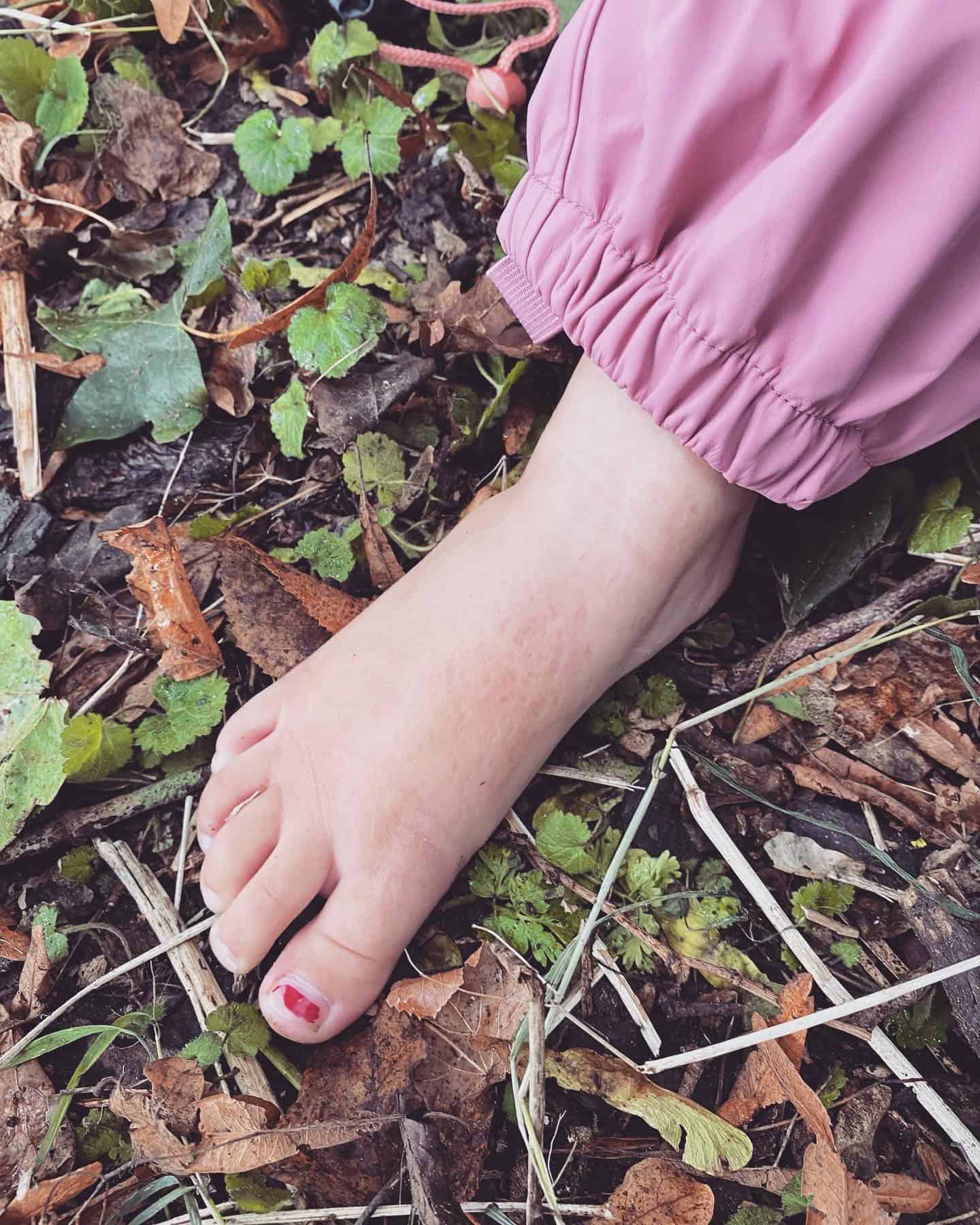
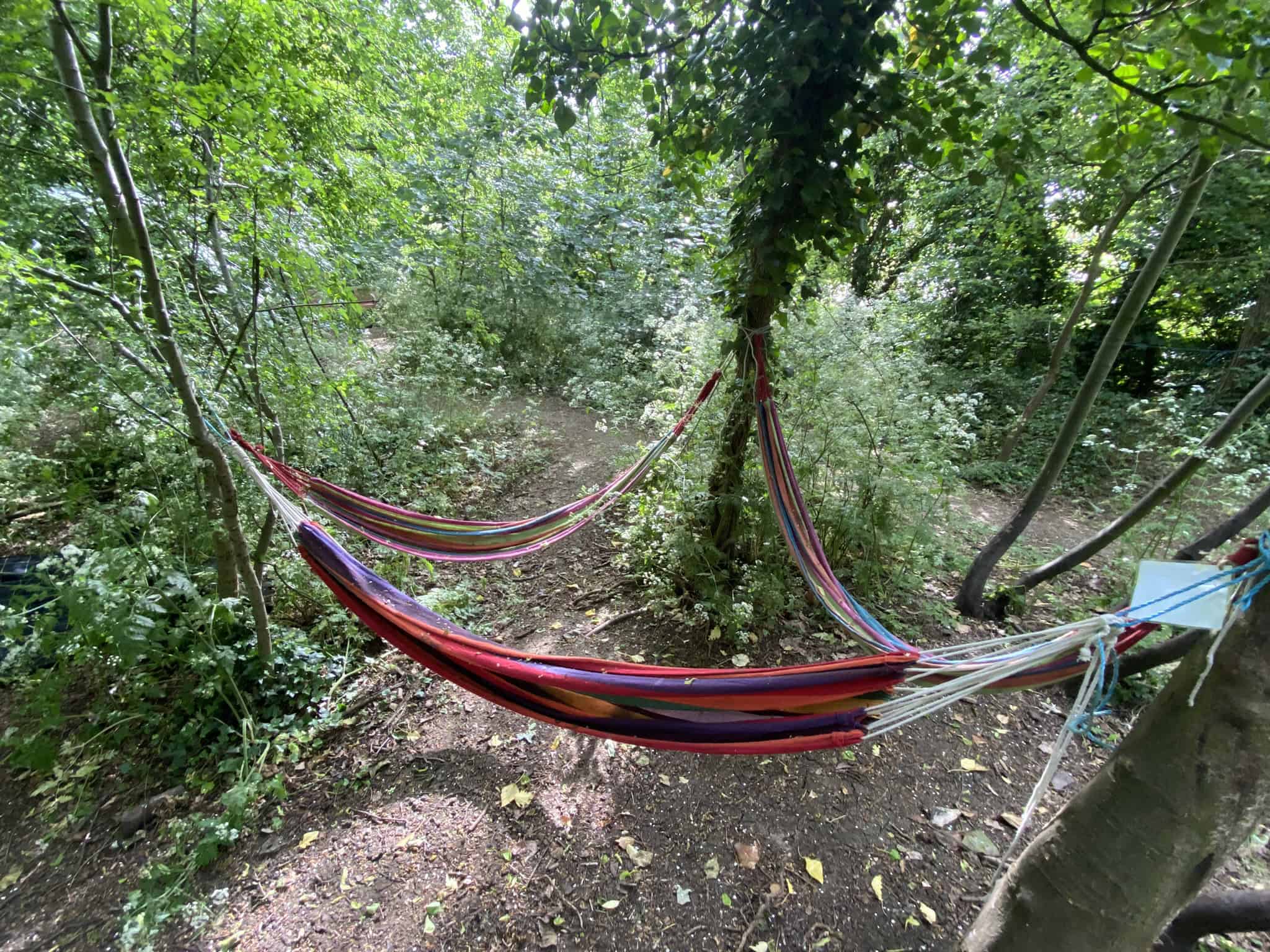
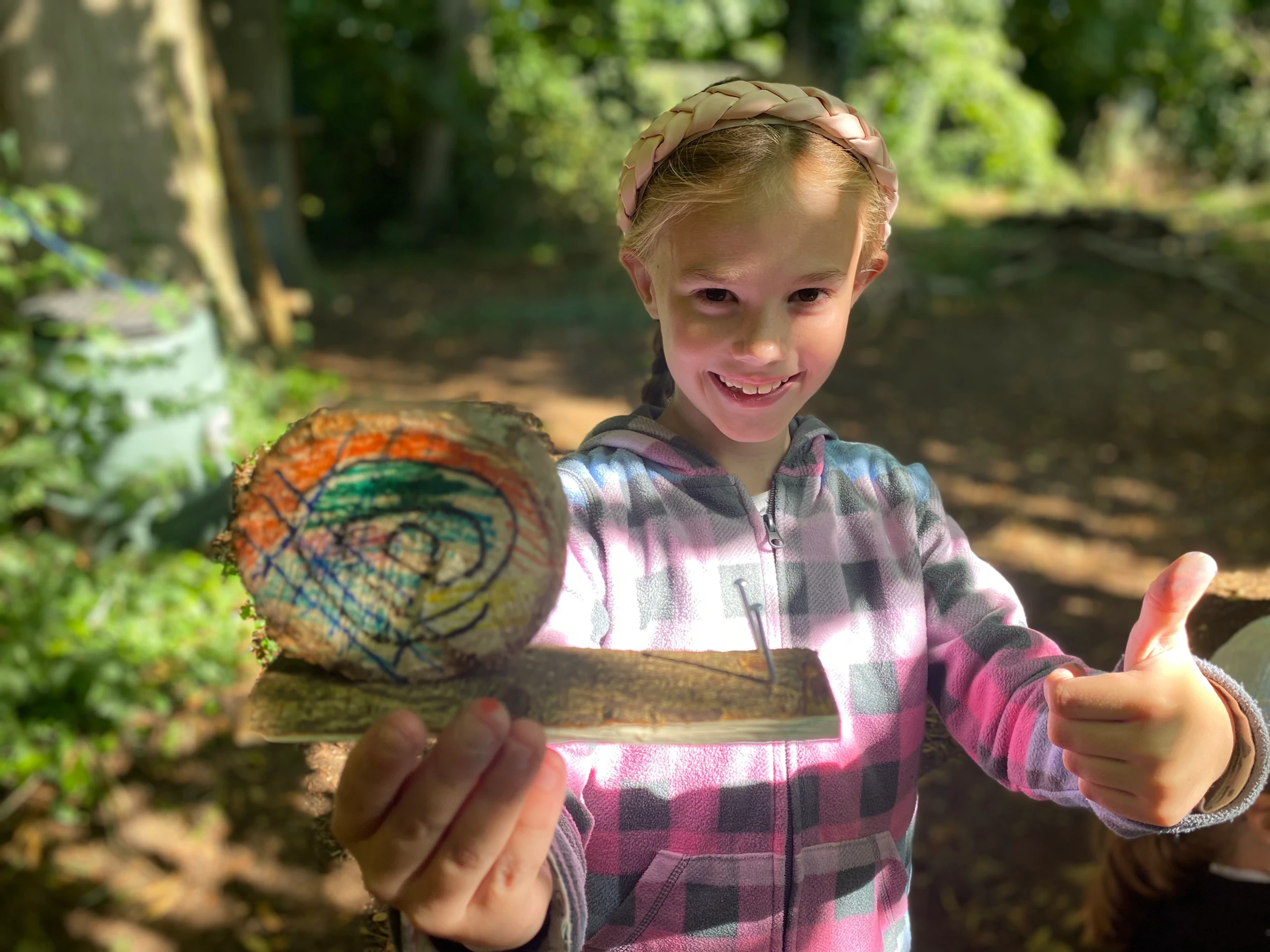
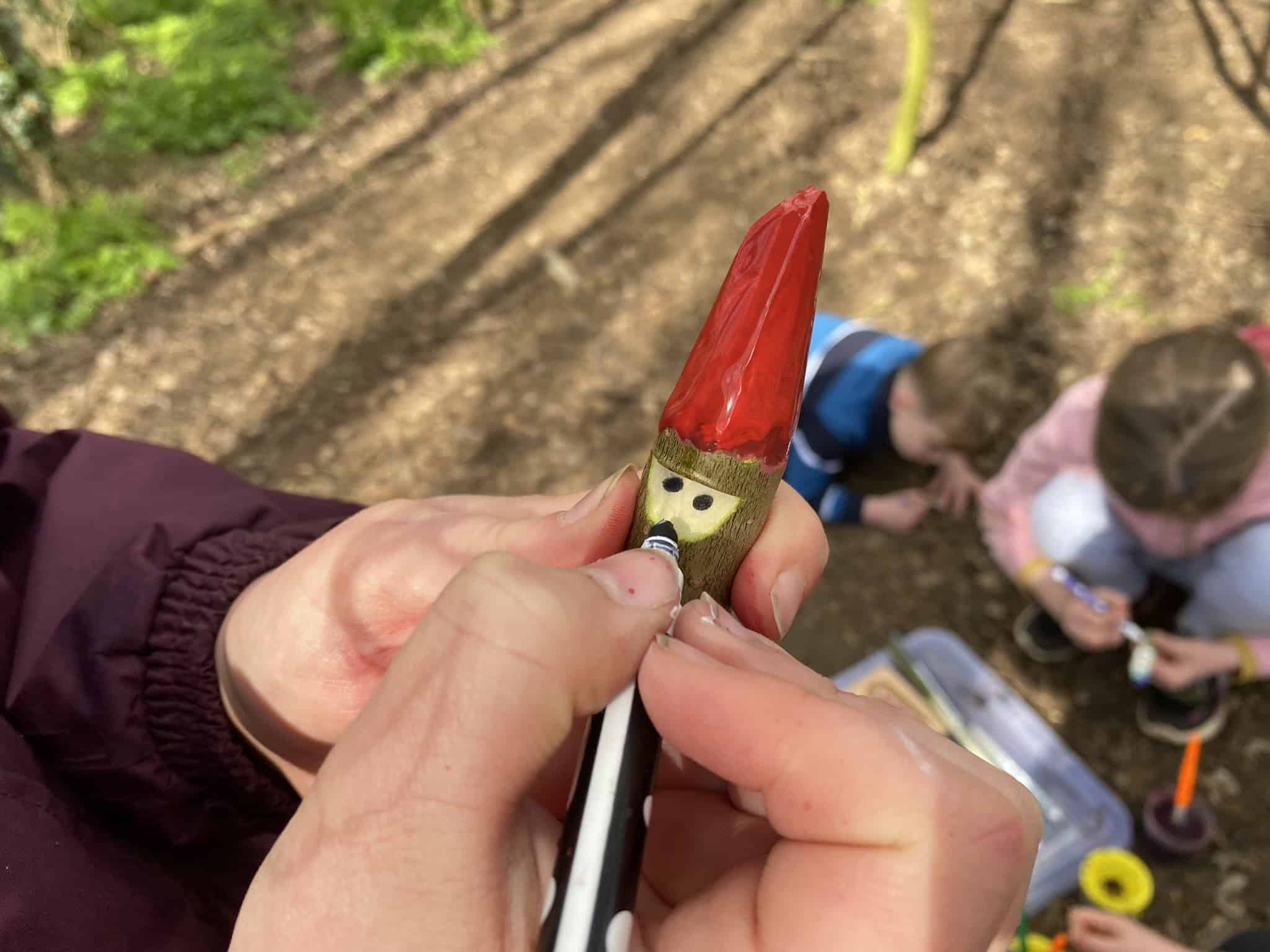
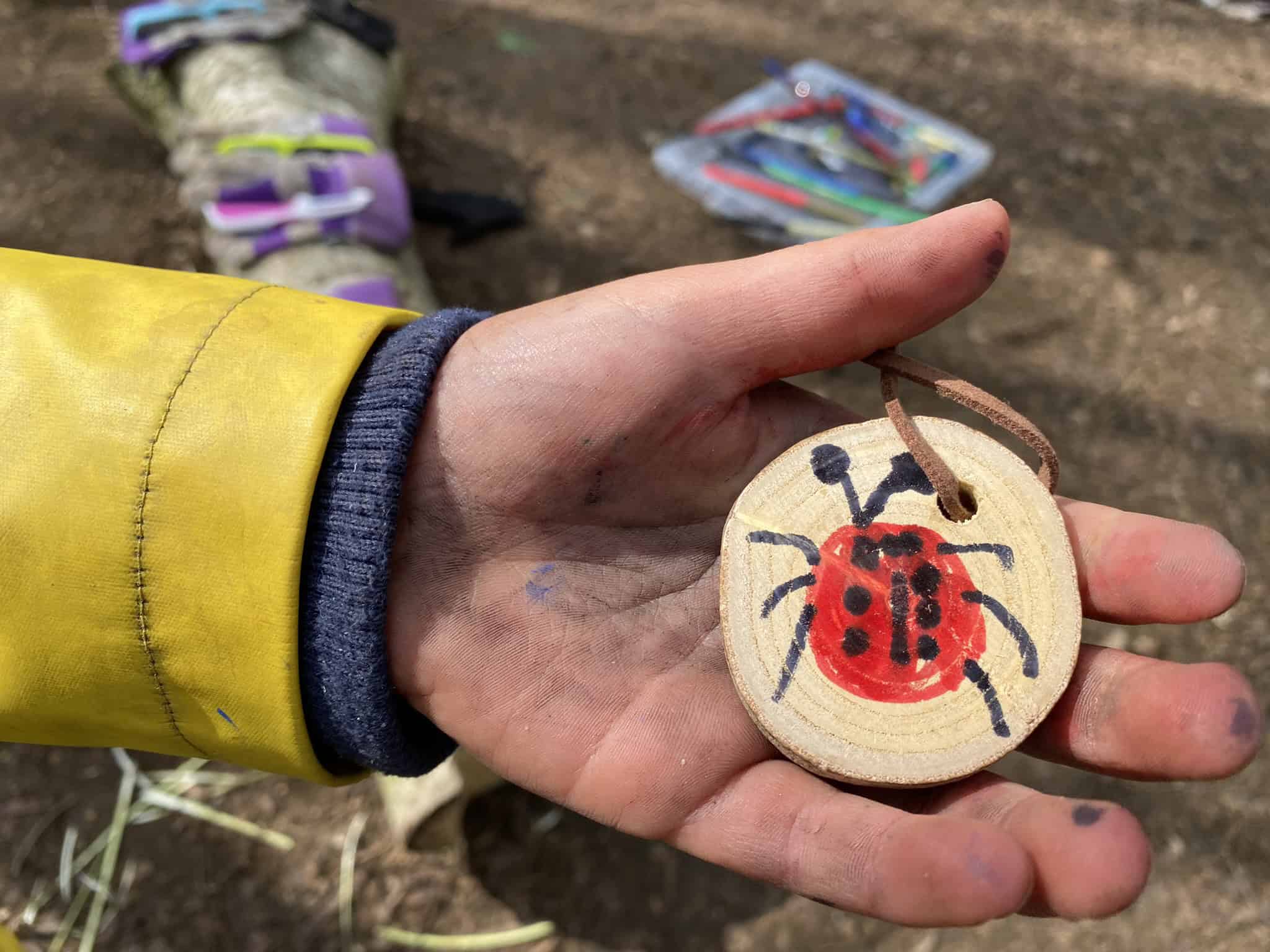
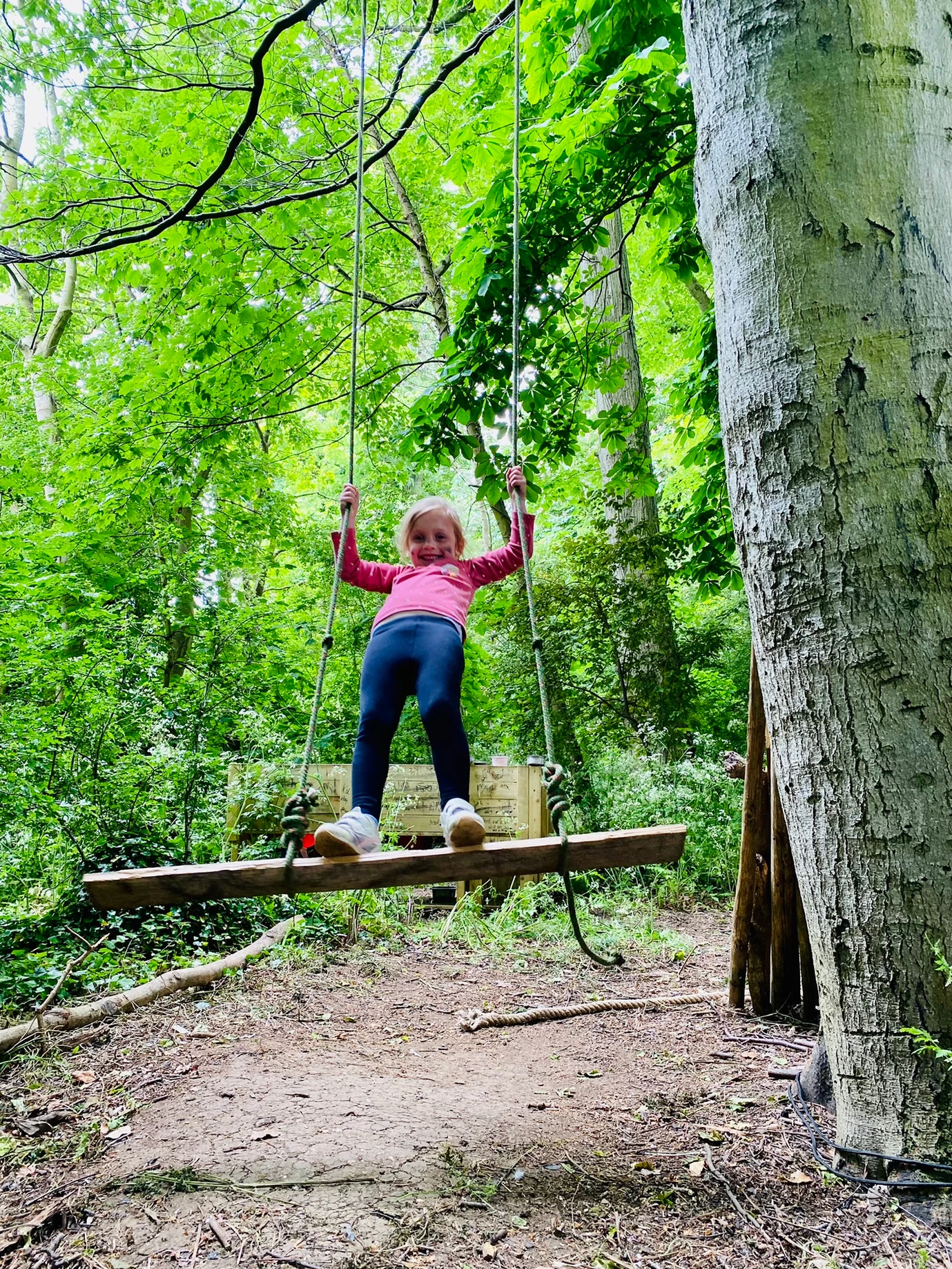
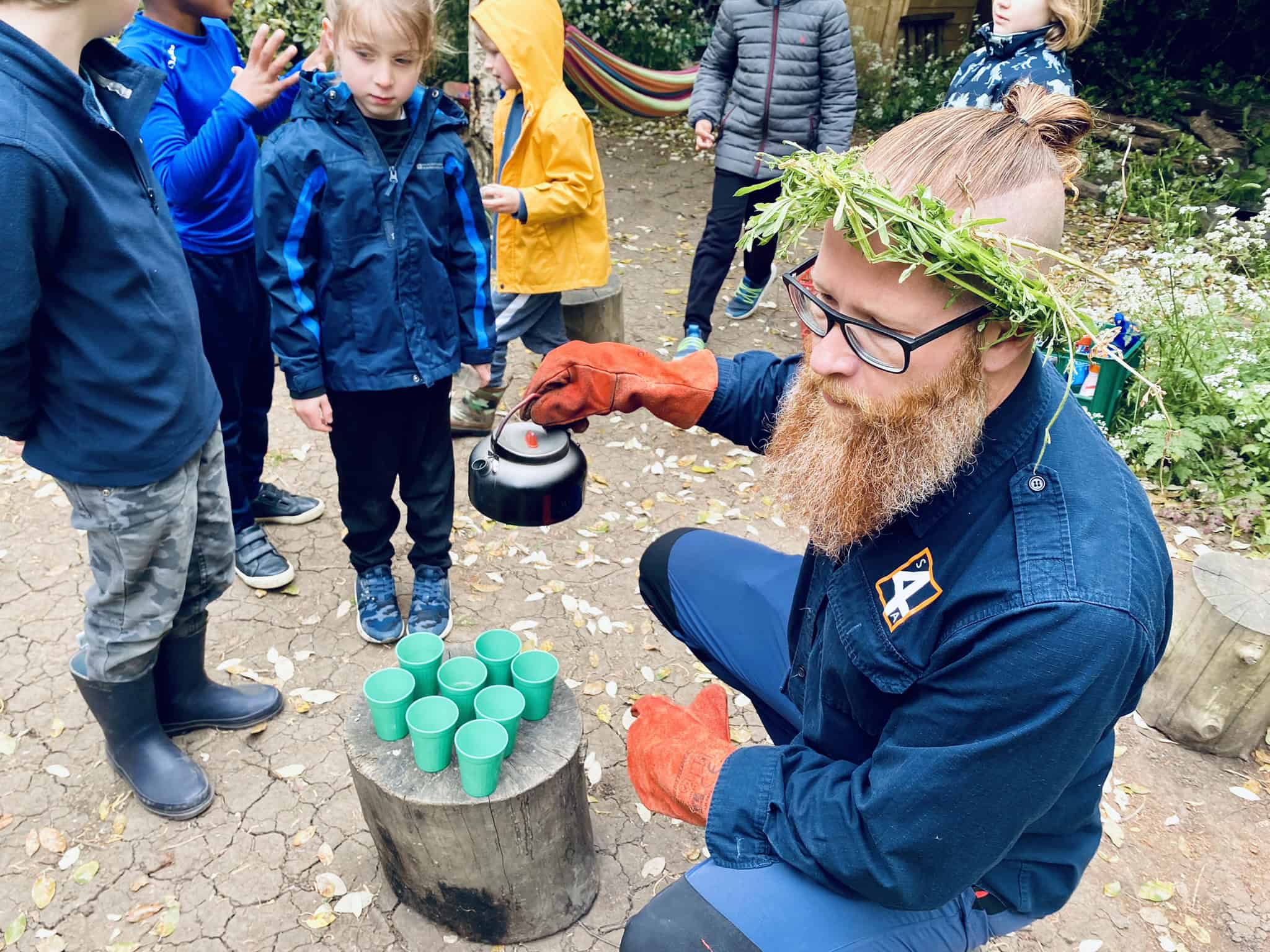
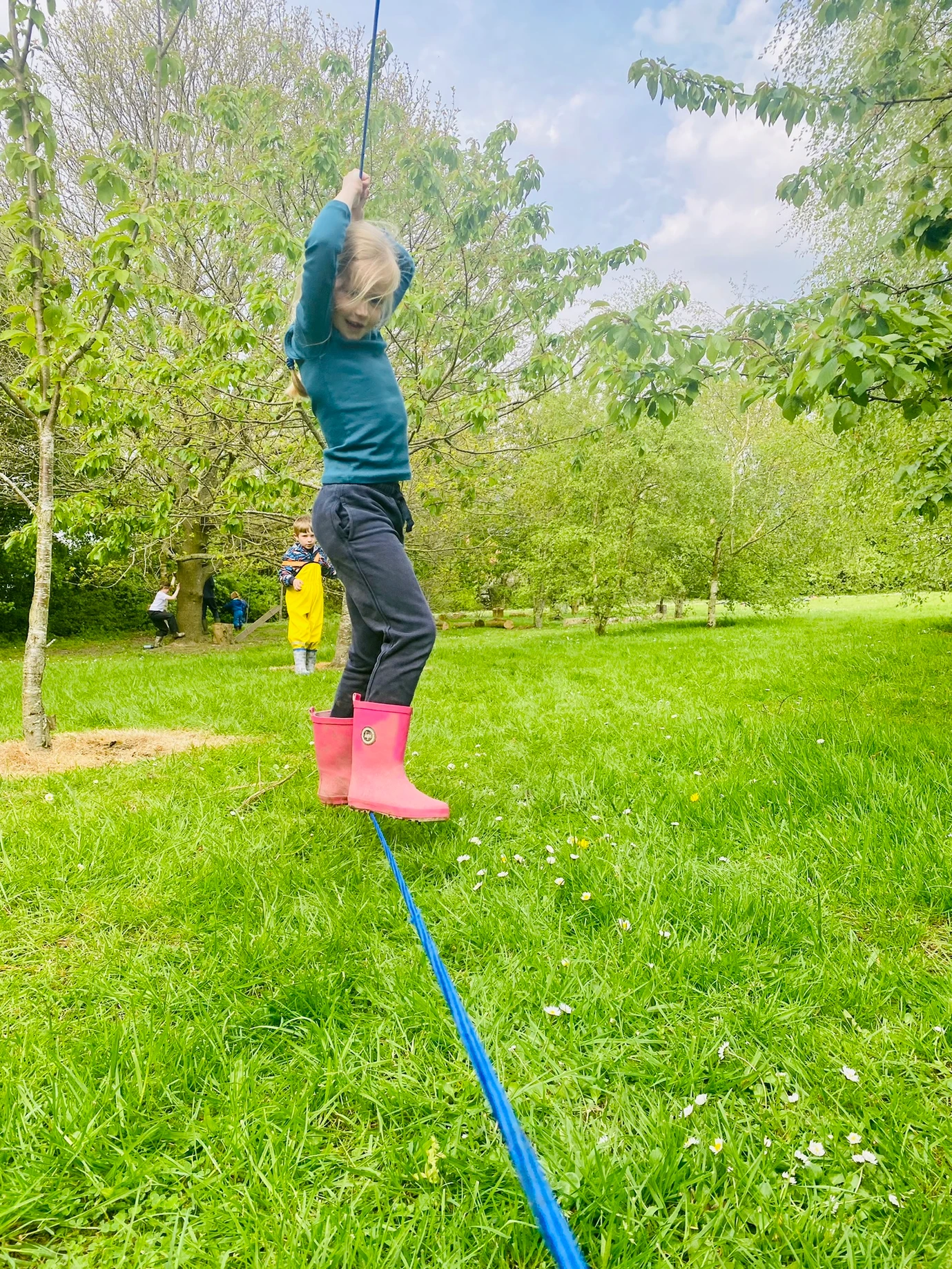
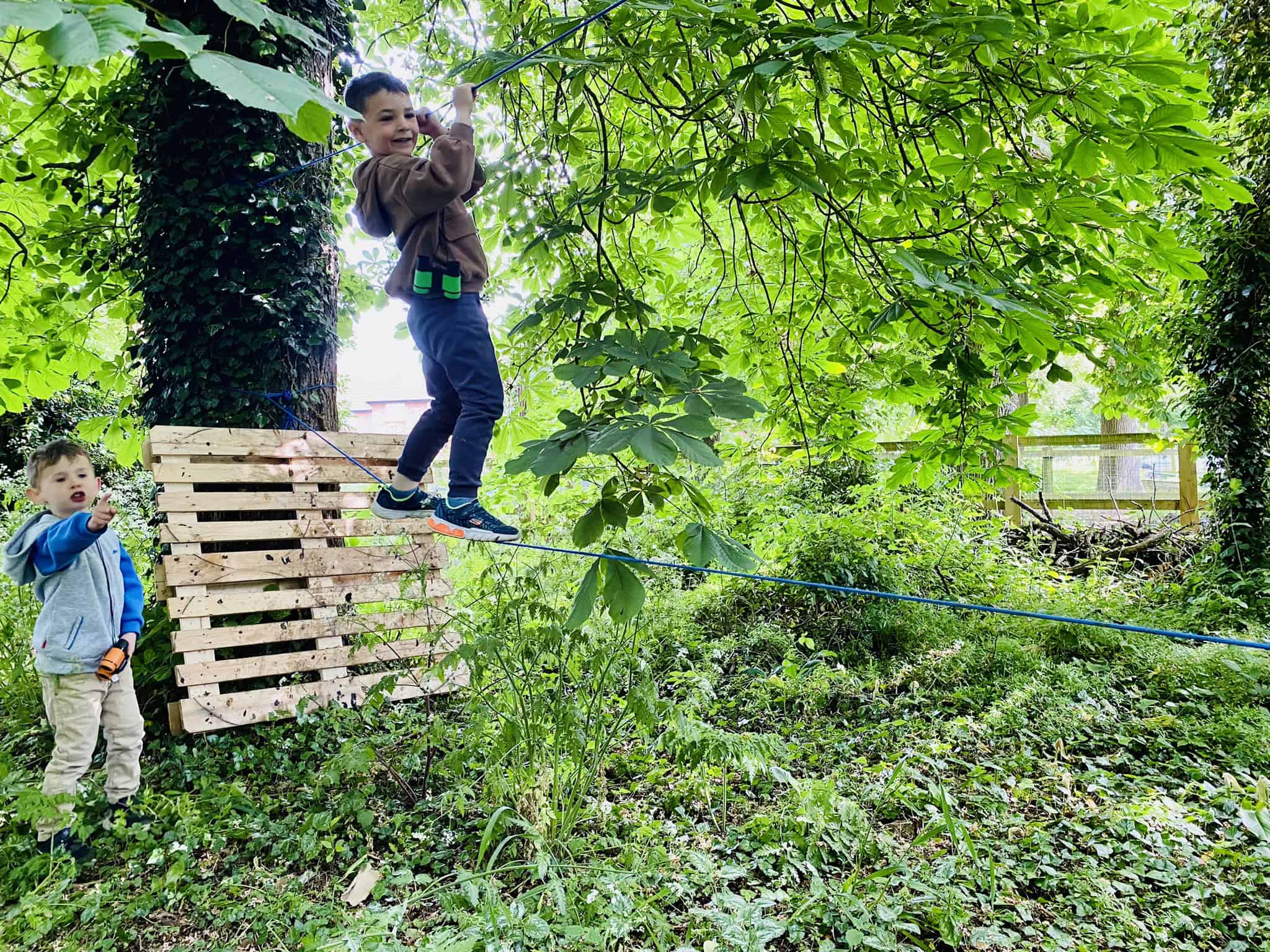
Slack ropes, rope swings and hammocks
If we can’t climb it we tie ropes to it and climb, swing or hang on those instead! Not only does it help to develop our gross motor skills but it is also a lot of fun!




Mini-beast hunting
The best way to encourage the next generation to respect and care for the natural world is by getting them hands on and excited about it. If they don’t know it’s there then understandably, how or why would they know it needs looking after? Mini-beast hunting explores the world through a macro lens. We climb into the insect world and explore where they live, what they eat and sometimes even what their poop looks like! If the site has a pond or stream and if it is safe to do so we may go pond dipping and exploring waterside ecosystems. This is also a great way to learn about water as a resource and how we can reduce our use and minimise waste.
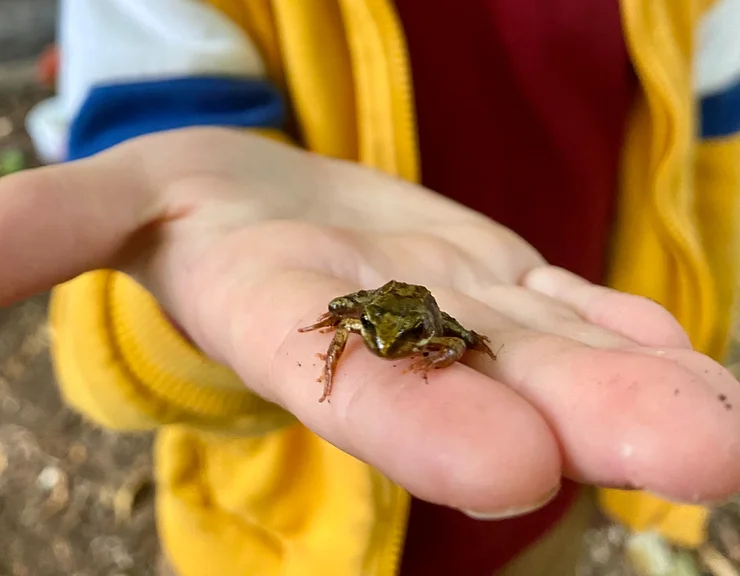
Fire skills
Ahh the joy of fire, can you beat the pleasure of sitting beside a roaring campfire? Yes you can if you planned it, built it and lit it yourself! Fire skills go beyond just lighting a fire, we discuss what fire needs to be successful, what may make it fail, everything to do with safety, wind direction, sparks and embers, and not just lighting but maintaining and extinguishing and the risk wildfires present to nature, and how to avoid them. And then we use a flint and steel and natural resources to create fire where there was none. It is truly magical to watch children explore and master an elemental force, one which can spark fear (pun intended again), one which has real risk associated with it. And then watch them safely extinguish it too.


Broccoli & Cauliflower (Campfire Cooking)
And what can take a campfire experience to the next level? Cooking on it of course! Hot fresh popcorn, toasted marshmallows, S’mores, pizza wraps, if we can cook it we are eating it! And depending on the season we’ll even forage for and brew up nettle tea! Now here’s a funny thing, for those of you who have greenery dodgers in the house, I tell every group that we will be toasting delicious Broccoli on the fire today. Beyond the screams of yuck! they ask why and I always tell them that we used to toast marshmallows but OFSTED said they had too much sugar in them and so we had to switch to Broccoli (I actually said this in front of an OFSTED inspector during an inspection, and she played along and agreed!), I ask if anyone doesn’t like Broccoli and some put their hands up, so I tell them I have brought along a bit of Cauliflower too, just in case, I even have a box which says BROCCOLI AND CAULIFLOWER in big letters on the side…. When I eventually tell them it’s marshmallows (because I accidentally brought the wrong box with me) they all ask for Broccoli! I have even brought Broccoli to sessions and it has been cooked and eaten! Everything tastes better on the campfire!





Mud, mud, glorious mud!
Most children know me by the name of Mr Mud, and there is a good reason for that. Of all the things children get told not to do, most often is “don’t get muddy!” But it is one of their favourite things to do and it has so many benefits, so I let them – what’s more I actively encourage their inner mud-monsters to come out to play! There is much to be said for getting muddy, if you’re somewhere playing in mud you are, at the very least, outdoors, disconnected from screens and fully connected to nature. Muddy play helps children to develop tactile skills through sensory play. It’s also a fantastic gross motor development activity which encourages us to focus on the moment to ensure we stay balanced, that in itself is an example of mindfulness, to be totally engrossed in the NOW – and all done whilst having hippopotamus sized fun! At Forest School we make no apologies for sending home muddy, happy children! They will come home saying “A little dirt never hurt” and that is absolutely true!
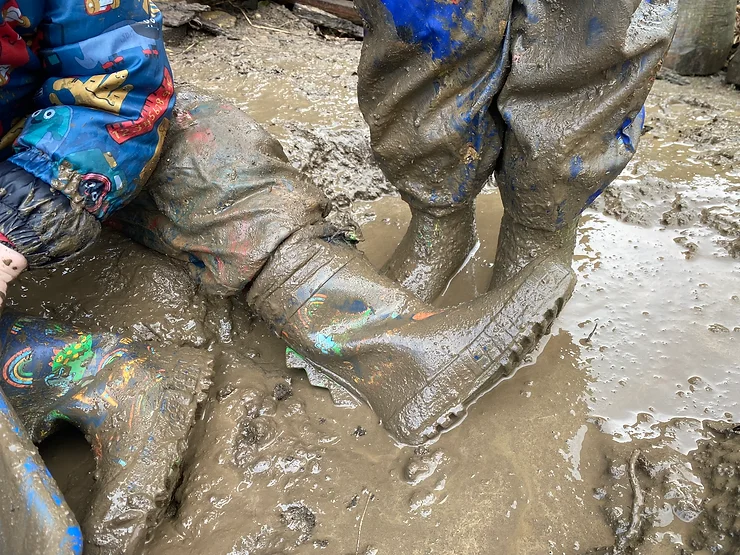
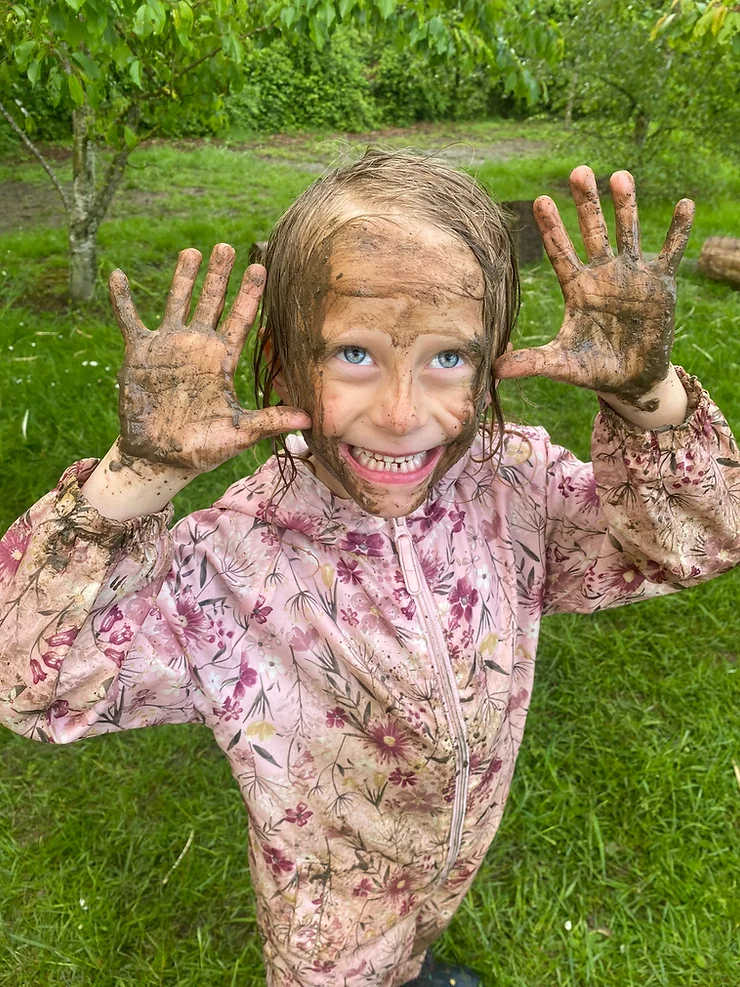
Mindfulness
Just about everything I do centres around the holistic development of children and young people. That means jointly the social, emotional, physical, mental, and intellectual growth of a person, and I put great effort into creating environments, activities and situations where the children who come to my sessions can get those benefits in an impactful, meaningful and memorable way. One thing I spend extra time and focus on however is in the support of their mental health and I do that by introducing them to mindfulness. At the end of every Forest School session, whether that is in lesson time, at an after school club or during holiday camps I give them a very simple method to calm themselves, to tune in to the moment, to their surroundings, and a way to gather themselves and find strength when they experience challenging times; I explain they can use the technique when they are angry, scared, upset, when someone is unkind to them, when something does not go as they expected and so on. I also invite them to get a bare foot in contact with the earth. Grounding, or earthing as this is known is a really great way to fully connect with nature and we encourage this (but it is optional) during our mindfulness moments. Not only is it relaxing, but the feel of mud between our toes is also a super fun way to explore our senses. With my regular visitors I ask if they have tried these techniques outside of Forest School and if it’s worked and so many hands go up. Then I tell them that they can help their friends by teaching them the technique and they are always more than willing.




If you ever thought Forest School was just sending kids to play in the woods, I truly hope that this blog has opened your eyes to what else goes on, and the benefits that those activities bring to your children. I also hope that you offer them toasted Broccoli and Nettle tea with every meal and that they don’t refuse!
Alex (Mr Mud) Rogers
Forest School Leader, Children’s Mental Health Ambassador, Environment & Sustainability Champion
